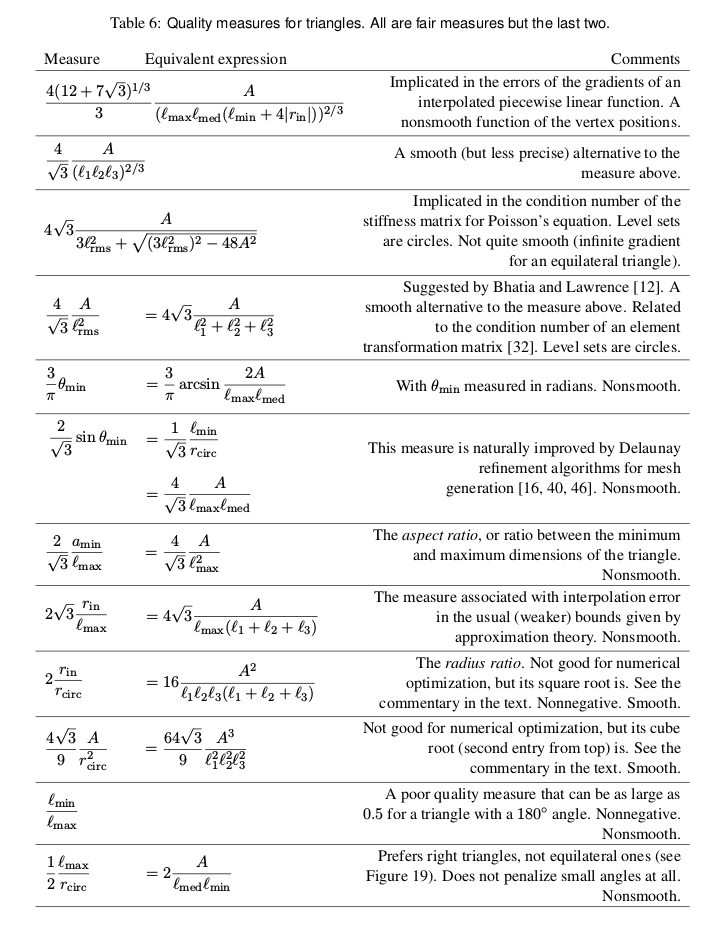As @Nicoguaro and @Paul have said in the comments to the question post, there are a great many ways to do this kind of thing, and I'm not sure if there is a single "best" approach.
From a review study of Jonathan Richard Shewchuck at Berkley, an answer is:
Please refer to the original document (version 31/12/2002) for symbology, terminology, special features and possibly more (e.g. tetrahedra). Chapter 6 is about quality measures. The document linked to is the extended version, and in JRS's webpage there is also an abridged one.
Personally, I am a fan of the "volume-length" metric. It's a good robust scalar indicator of (isotropic) simplex quality and is cheap to compute. In two-dimensions:
$a = \frac{4\sqrt{3}}{3}\frac{A}{\|\mathbf{e}_{\mathrm{rms}}\|^{_2}}$
where $A$ is the signed area of the triangle and $\|\mathbf{e}_{\mathrm{rms}}\|$ is the root-mean-square edge length. Ideal elements achieve $a=1$, which decreases toward zero with increased distortion. Inverted elements with reversed orientation have $a < 0$.
To asses the quality of an unstructured triangulation it's typical to look at histograms of such element quality metrics. There are many implementations of such things out there, but one straight-forward MATLAB code-base of mine is here.
In addition to volume-length scores, histograms of element angles and vertex degree are also computed by default.
